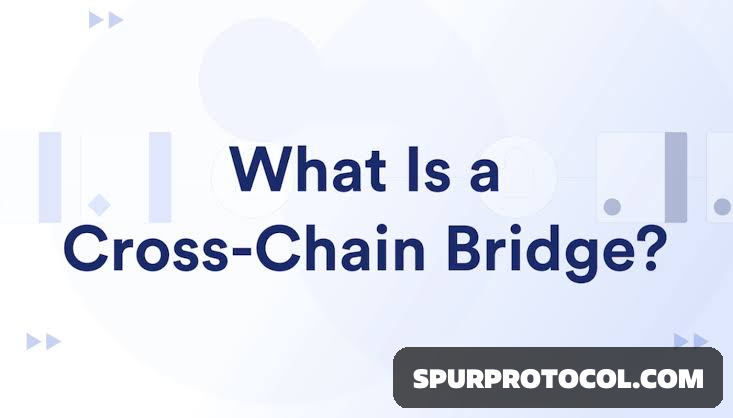What Is A Cross-chain Bridge?
Blockchain bridges connect different blockchain networks, enabling the movement of digital assets across networks and facilitating interoperability in the crypto space
Go Back

🕒 7:58 PM
📅 May 09, 2025
✍️ By Ecojames
Cross-chain bridges are software-based interoperability solutions that are designed to enable seamless interactivity between blockchains.
How cross-chain bridges work?
The mechanics of cross-chain bridges vary depending on the type of bridge, but their core purpose remains the same: to securely transfer data or assets between blockchains that would otherwise be unable to communicate.
1. Locking and Minting Process:
(a.) Initiate a transfer on the source chain
Suppose you have an asset on Ethereum that you want to transfer to Solana. First, you send this asset on Ethereum to a bridge contract, which “locks” it in place.
(b.) Register deposit and notify the target chain
Once the asset is locked, the Ethereum bridge contact registers the deposit and sends a secure message to its counterpart on the Solana blockchain.
(C.) Create a wrapped asset on the target chain
Upon receiving the message, the Solana bridge contract creates a copy of the locked asset, known as a “wrapped” asset. This wrapped asset represents the original Ethereum asset and can be used on the Solana network as if it were native to Solana.
2. Unlocking and Burning Process (Reversing the Transfer):
(a.) Burn the wrapped asset on the target chain
You send the wrapped asset on Solana to its bridge contract, effectively removing it from circulation. This process, known as “burning,” ensures that the wrapped asset no longer exists on Solana.
(b.) Register burn and notify the source chain
The Solana bridge contract registers the burn and sends a message back to its Ethereum counterpart, confirming the removal of the wrapped asset.
(C.) Unlock the original asset on the source chain
Upon receiving the message, the Ethereum bridge contract unlocks the original asset, returning it to the designated address.
Benefits of cross-chain bridges
1. Blockchain interoperability
Cross-chain bridges allow assets issued on one blockchain to be used in applications on another. As a result, developers and users are not limited to a single blockchain's capabilities.
2. Improved liquidity
Cross-chain bridges enhance liquidity in the blockchain ecosystem. With the ability to move assets across chains, more trading pairs become available and assets on newer chains can tap into the liquidity of established chains.
3. Optimized scalability
Cross-chain bridges allow applications to build on faster chains, helping to distribute load and improve performance everywhere. Layer 2 solutions such as Optimistic Rollups and ZK Rollups, which also employ cross-chain bridges, specifically aim to address the scalability issue.
4. Expanded use cases
Cross-chain bridges facilitate new use cases and functionalities by allowing interactions between smart contracts on different blockchains. For example, a DeFi protocol on the Polygon blockchain could use a stablecoin minted on the Ethereum blockchain.
